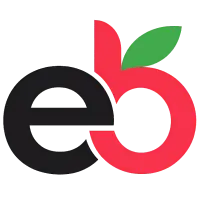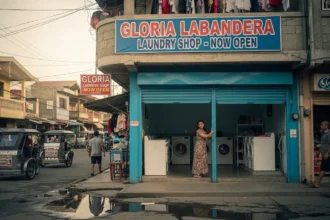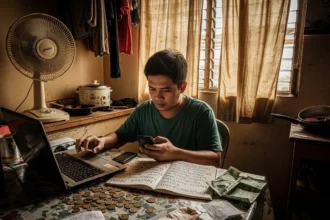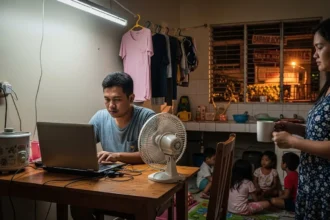“₱20,000? Kaya ba ‘yan?”
- 🏪 1. Sari-Sari Store
- 🍢 2. Street Food Stall (Fishball, Kwek-Kwek, Etc.)
- 📦 3. Online Selling (Shopee, Lazada, FB Marketplace)
- 👕 4. Ukay-Ukay Reselling
- 🖨️ 5. Printing Services (Tarpaulin, Shirts, Stickers)
- 🍲 6. Home-Based Food Business (Silog Meals, Merienda, Frozen Goods)
- 📱 7. E-Loading & Bills Payment Business
- 🧴 8. Homemade Beauty & Skincare Products
- 🌱 9. Plant Selling (Ornamental & Edible)
- 🧹 10. Cleaning Services (Residential)
- 🗣️ Real Stories, Real Lessons
- 💡Tips to Maximize Small Capital
- ❓ Frequently Asked Questions (FAQs)
- ❤️ Final Say – Small Capital, Big Possibilities
- 🧭 References
That’s the usual reaction when someone thinks of starting a business with a small budget. With rising prices, many Filipinos feel that only big capital can lead to real profit. But here’s the truth: ₱20,000 can be enough to spark a sustainable, income-generating business-if you plan smart and choose the right venture.
Small capital businesses are where most successful entrepreneurs begin. From sari-sari stores tucked in a barangay corner to street food carts feeding hundreds daily, these humble ventures prove that diskarte matters more than starting big. So if you’ve been waiting for the right time to start your entrepreneurial journey-this is it. Let’s dive into the top 10 businesses you can start in the Philippines today with just ₱20,000 capital.

🏪 1. Sari-Sari Store
The sari-sari store is the ultimate Filipino micro-business. Almost every barangay has one, yet demand never dies. Convenience is king: kapitbahay customers would rather buy a single sachet of shampoo or a stick of yosi from the corner store than head to the supermarket. With the right location-inside a subdivision, near a tricycle terminal, or beside a school-a sari-sari store can generate steady daily sales. The challenge? Standing out in a crowded space and managing credit (“pautang”) without draining cash flow.
Startup & Operating Costs
Initial capital (₱15K–₱20K) usually goes to shelving, a small freezer for cold drinks, signage, and your first batch of stock (sachets, snacks, canned goods, soft drinks). Operating expenses include restocking, electricity (for lights and freezer), and small maintenance costs. The hidden costs often come from spoilage (expired goods) and “utang” that’s not repaid. To keep expenses lean, many start sari-sari stores at home to avoid paying rent.
Income Potential & Break-Even
Daily sales can range from ₱500 to as much as ₱3,000 depending on location and foot traffic. Profit margins hover around 10–20%, meaning you’ll earn ₱1–₱6 profit on a ₱30 item. With consistent sales, break-even can happen in 6–12 months. The key to growth is reinvestment: adding higher-margin products like ready-to-eat snacks, prepaid load, or even a small coffee/soft drink corner.
Permits & Legal Requirements
Most sari-sari stores start informally, especially if run at home, but at some point you’ll want to make the store official-especially if you plan to expand, apply for loans, or add services like bills payment and e-load.
Here’s when and how to process permits:
- Barangay Clearance – Apply at your barangay hall. They’ll ask for valid ID and proof of address. Fees range from ₱200–₱500.
- Mayor’s Permit / Business Permit – Secure this at your city or municipal hall. It usually requires your barangay clearance, valid ID, and lease agreement (if renting). Fees vary, usually ₱1,000–₱3,000 for small stores.
- DTI Business Name Registration – Register your store’s name online or at a DTI office. Costs ₱200–₱500 depending on the scope (barangay, city, or national).
- BIR Registration – Needed if you’ll issue receipts or scale up. Pay a ₱500 annual registration fee and get official receipts printed (₱1,000–₱2,000).
- Sanitary Permit – If you prepare or sell cooked food, this is required. Health inspection and fees cost around ₱500–₱1,000.
👉 Tip: For very small home-based stores, many owners delay registration to save costs. But if your daily sales go above ₱1,000, or you plan to expand services, start processing permits. Being legal also adds credibility with suppliers and customers.
Advice for New Sari-sari Store Owners
The success of a sari-sari store depends on three things: location, discipline, and adaptability. A corner spot near schools or terminals can double your sales compared to a hidden location. Discipline matters when managing credit-set clear limits for pautang and track every centavo. Adaptability means knowing when to expand your offerings: start with basics like snacks and soft drinks, then reinvest profits into higher-margin products or services like prepaid load, bills payment, or even a mini-eatery.
Think of your store as a stepping stone: start small, keep it simple, and let it grow with your community. Many big groceries in the provinces today started as tiny sari-sari stores that steadily reinvested and expanded.
📊 Sari-Sari Store at a Glance
| Factor | Details |
|---|---|
| Startup Costs | ₱15K–₱20K for shelving, freezer, stock, signage |
| Operating Expenses | Restocking, electricity, spoilage, minimal maintenance |
| Income Potential | ₱500–₱3,000/day sales, 10–20% margins |
| Market Demand | Strong in dense neighborhoods, relies on convenience-driven purchases |
| Competition & Location | High competition; edge comes from proximity and personal service |
| Break-Even Period | 6–12 months with steady sales |
| Risks | Utang culture, expired stock, thin margins |

🍢 2. Street Food Stall (Fishball, Kwek-Kwek, Etc.)
Street food is one of the most iconic parts of Pinoy culture. From school kids to office workers, everyone has a soft spot for fishball, kwek-kwek, kikiam, and isaw. A small stall placed near schools, terminals, or barangay centers can attract heavy foot traffic at merienda time. The market demand is steady because these snacks are cheap (₱5–₱20 per stick/serving) and irresistible. It’s also scalable-start with fishball and kwek-kwek, then expand to siomai, gulaman, or silog meals as your capital grows.
Startup & Operating Costs
Startup capital of ₱8K–₱15K is enough for a basic cart or kiosk, fryer, utensils, initial stock of street food packs (fishballs, squid balls, kikiam), cooking oil, sauces, and permits. Operating expenses include daily replenishment of ingredients, LPG or charcoal, electricity (if applicable), and small packaging costs (cups, sticks, plastic bags). Hidden costs come from spoilage (leftover food that can’t be sold), rising oil prices, and rainy days when foot traffic slows down.
Income Potential & Break-Even
Daily sales can hit ₱1,500–₱5,000, with profit margins around 30–40%-much higher than sari-sari stores. On a good location (e.g., outside a school gate), your stall could earn ₱15K–₱40K per month. Break-even can happen fast, often in 3–6 months, especially if you expand your menu and keep regular customers. The secret is consistency: clean setup, delicious sauces, and a friendly tindero/tindera vibe that keeps suki coming back.
Permits & Legal Requirements
Street food stalls are often run informally, but if you want to expand or secure a permanent spot, permits will protect your business.
- Barangay Clearance – Register at your barangay hall. This is often the first requirement. (~₱300–₱500)
- Mayor’s Permit / Business Permit – Needed if you’ll operate in a busy street corner or near terminals. (~₱1,000–₱3,000 depending on location)
- Sanitary & Health Permits – Since food safety is critical, both the stall and food handlers need clearance from the local health office. (~₱500–₱1,000)
- DTI Business Name Registration – Optional for very small stalls, but worth getting if you want to brand and grow your street food business. (~₱200–₱500)
👉 For simple pushcarts, many vendors skip permits at first. But once you expand to multiple carts or a fixed stall, processing permits will make it easier to join bazaars, malls, or food parks.
Advice for New Food Stall Vendors
Success in street food is about location and consistency. High-traffic areas like school gates, tricycle terminals, and public markets bring the best sales. Keep your stall clean and your oil fresh – customers notice hygiene. Start small with a few bestsellers (fishball, kwek-kwek, kikiam), then add variety once you have regulars. If you dream bigger, reinvest your profits into upgrading your cart, improving signage, or even opening a small kiosk. Many well-known fast-food chains in the Philippines started from humble street food beginnings – yours could be the next one.
📊 Street Food Stall at a Glance
| Factor | Details |
|---|---|
| Startup Costs | ₱8K–₱15K for cart/kiosk, fryer, utensils, stock, permits |
| Operating Expenses | Ingredients, oil, LPG/electricity, packaging, spoilage risk |
| Income Potential | ₱1,500–₱5,000/day sales, 30–40% margins |
| Market Demand | Strong near schools, jeepney terminals, barangay centers |
| Competition & Location | Medium to high; sauces, cleanliness, and suki treatment are your edge |
| Break-Even Period | 3–6 months with consistent sales |
| Risks | Spoilage, bad weather, strict health regulations |

📦 3. Online Selling (Shopee, Lazada, FB Marketplace)
E-commerce has exploded in the Philippines. With Shopee, Lazada, and Facebook Marketplace, even a small seller can reach thousands of buyers nationwide. From fashion finds to home essentials and gadgets, online selling thrives because Pinoys love convenience and “COD” (Cash on Delivery). Unlike physical stores, online selling doesn’t need a prime location-just a phone, good product photos, and consistent effort. The demand is broad: students resell thrifted clothes, moms sell skincare, and techies flip gadgets. The beauty is flexibility-sell part-time or scale it into a full-time gig.
Startup & Operating Costs
Startup capital (₱5K–₱15K) depends on your niche. For example: clothes (ukay finds or fast fashion) may need ₱10K for initial inventory, while beauty/skincare reselling can start at ₱5K. You’ll also need packaging materials (pouches, bubble wrap, tape) and maybe a ring light for product photos. Monthly expenses include restocking, shipping fees, and small marketing boosts (FB ads, influencer shoutouts). Hidden costs: returns/refunds, delivery delays, or damaged goods. The advantage: no rent required, especially if you store items at home.
Income Potential & Break-Even
Sales vary by effort and niche. Beginners often earn ₱5K–₱15K/month, while serious sellers can hit ₱25K+ or more. Margins range from 20–50%, depending on your product type. Popular categories like beauty, gadgets, and fashion can yield faster ROI if you market well. Break-even typically happens within 2–4 months. Consistency in uploading new products, maintaining positive reviews, and offering fast shipping are key to long-term success.
Permits & Legal Requirements
Many online sellers start casually, but as soon as you scale – handling higher sales volumes, hiring riders, or expanding to multiple platforms – getting permits will help legitimize your store.
- DTI Business Name Registration – Required to open an official shop on platforms like Lazada and Shopee. (~₱200–₱500 depending on scope)
- Barangay Clearance & Mayor’s Permit – If you’re storing inventory at home, most sellers skip this initially. But once you rent a warehouse or physical pick-up point, permits become necessary. (~₱1,000–₱3,000)
- BIR Registration – Needed if you want to issue receipts, apply for business loans, or join bigger e-commerce programs. (~₱500 annual fee + receipt printing)
- FDA or Product-Specific Permits – If you’re selling cosmetics, health products, or food, additional certifications may be required.
👉 For part-time or small-scale sellers, platforms rarely check permits strictly. But when monthly sales start hitting ₱30,000–₱50,000+, securing permits avoids future issues and builds customer trust.
Advice for New Online Sellers
Winning in online selling is all about product choice and customer service. Start with fast-moving items like clothes, gadgets, or home essentials, then grow into niches where competition is lower. Post clear photos, use honest descriptions, and reply quickly to inquiries – reputation is your biggest asset online. Invest in small marketing boosts (Facebook ads, Shopee vouchers) once you see consistent sales. Always reinvest profits into better packaging and wider inventory. Many successful e-commerce entrepreneurs started with only a few items posted on Facebook Marketplace – the key is consistency and building trust with your buyers.
📊 Online Selling at a Glance
| Factor | Details |
|---|---|
| Startup Costs | ₱5K–₱15K for initial inventory, packaging, marketing |
| Operating Expenses | Restocking, packaging supplies, shipping fees, small ads budget |
| Income Potential | ₱5K–₱25K+ monthly sales, 20–50% profit margins |
| Market Demand | Huge, covers almost all categories: fashion, beauty, gadgets, home goods |
| Competition & Location | High, but no need for physical store; success depends on niche + reviews |
| Break-Even Period | 2–4 months with consistent sales |
| Risks | Refunds, delivery issues, stiff competition, platform policy changes |

👕 4. Ukay-Ukay Reselling
Filipinos love bargains, and ukay-ukay (secondhand clothes) shops provide trendy or branded items at sulit prices. With ₱20K or less, you can start reselling pieces from a bale (bundle) of clothes. Ukay has a loyal market: students, young professionals, and budget-conscious families. Add the thrill of “ukay hunting,” where buyers feel proud to score branded jeans or jackets for just ₱100–₱200, and you’ve got a consistently strong demand. Locations near schools, barangays, and markets are hot spots. Online reselling on FB Live or Shopee also expands reach.
Startup & Operating Costs
A starter bale costs around ₱8K–₱15K depending on category (jeans, jackets, mixed items). Add costs for transport, basic renovations (racks, hangers, signage), and simple cleaning/steaming equipment. Operating expenses include monthly rent (if outside your home), electricity, water, plus occasional spoilage if items are unsellable. Hidden costs: varying bale quality-sometimes you get gems, sometimes just pang-bahay clothes.
Income Potential & Break-Even
A ₱10K bale can flip into ₱25K–₱40K in sales if items are sorted, cleaned, and priced well. Markups range from 50–200% depending on item quality (e.g., ₱80 for basic tops, ₱300+ for branded finds). Daily sales vary widely, but a good location or online presence can generate ₱1K–₱5K/day. Many sellers break even within 2–3 months if demand is steady. The key is marketing-posting “new arrivals,” running FB Live selling sessions, and offering bundle discounts.
Permits & Legal Requirements
For small backyard or garage sales of preloved clothes, most sellers skip permits at first. But once you open a physical store, join weekend markets, or import bales of ukay-ukay, you’ll need the following:
- Barangay Clearance – Needed for any business operating in your neighborhood. (~₱300–₱500)
- Mayor’s Permit / Business Permit – Required for stalls, rented spaces, or stores. (~₱1,000–₱3,000 depending on city)
- DTI Business Name Registration – Gives your shop an official brand identity. (~₱200–₱500)
- BIR Registration – Necessary if you issue receipts or scale to a bigger thrift shop. (~₱500 annual fee + receipts)
- Customs / Import Clearances – If you’re importing ukay-ukay bales directly, you’ll need to go through accredited suppliers and ensure Bureau of Customs compliance.
👉 If you’re starting small with preloved clothes from your own closet or friends, you can operate informally. But for sourcing imported bales or renting a store, securing permits is a must.
Advice for New Ukay-Ukay Sellers
Success in ukay-ukay is about curation and presentation. Customers love the “hunt” but they also appreciate neat displays and good lighting. Wash and iron your items before selling – cleanliness makes preloved clothes feel like new finds. Start with weekend garage sales or online platforms, then move into a physical store when you have regular buyers. Pick a location near schools or markets where foot traffic is strong. As profits grow, you can specialize in niches like vintage wear, branded items, or children’s clothing. Many thriving ukay-ukay shops today began with just one bale and a borrowed rack – consistency and creativity make the difference.
📊 Ukay-Ukay Reselling at a Glance
| Factor | Details |
|---|---|
| Startup Costs | ₱8K–₱15K per bale, racks, hangers, signage, basic cleaning supplies |
| Operating Expenses | Rent (if outside home), utilities, transport, occasional spoilage |
| Income Potential | ₱25K–₱40K per bale; ₱1K–₱5K/day sales possible |
| Market Demand | Strong in urban areas, schools, barangays; online reselling on FB/Shoppe |
| Competition & Location | High; success depends on location + trendy or branded stock |
| Break-Even Period | 2–3 months with consistent turnover |
| Risks | Bale quality varies, seasonal demand, competition, barangay regulations |

🖨️ 5. Printing Services (Tarpaulin, Shirts, Stickers)
We all love celebrations, and almost every event needs a tarp, shirt, or printout. From birthdays and graduations to barangay events and small business signage, printing services are always in demand. Schools and universities also fuel steady orders for IDs, projects, and org shirts. With a small capital, you won’t compete with big print shops yet, but you can start lean-like a home-based sticker/ID print service or a shirt-printing sideline. The demand is steady year-round, peaking during school season, campaign periods, and fiesta months.
Startup & Operating Costs
A modest setup (₱15K–₱20K) can cover a basic inkjet printer, heat press machine (for shirts), laminator, initial stock of ink, paper, vinyl, and blank shirts. If you go tarpaulin, outsourcing actual large-format printing to a partner shop is cheaper than buying your own machine. Operating expenses include ink refills, blank shirts or vinyl sheets, electricity, and packaging. Hidden costs: machine maintenance (printers clog easily), seasonal dips (like school breaks), and waste from misprints.
Income Potential & Break-Even
Margins are attractive: ₱5–₱15 profit per page, ₱100–₱200 profit per custom shirt, and larger margins for bulk tarpaulin orders. A single ₱10K school/org shirt project could already cover your starting capital. With steady orders, monthly earnings can range ₱8K–₱20K+. Break-even usually happens in 4–6 months, faster if you’re near schools or can lock in barangay/corporate clients. The key: offer package deals (e.g., tarp + shirts for a reunion) and market via FB Pages or word-of-mouth.
Permits & Legal Requirements
If you’re starting small from home (custom shirts, stickers, small tarpaulin jobs), you can operate informally at first. But once you set up a shop with walk-in customers or bigger machines, you’ll need to secure:
- Barangay Clearance – First step for any business in your area. (~₱300–₱500)
- Mayor’s / Business Permit – Required once you open a physical shop. (~₱1,000–₱3,000 depending on LGU)
- DTI Business Name Registration – Needed if you want to brand your printing service. (~₱200–₱500)
- BIR Registration – If you’ll issue official receipts or bid for company contracts. (~₱500 annual fee + printing of receipts)
- Copyright & Licensing Awareness – Not a permit, but important: avoid printing copyrighted logos or branded designs without permission to avoid legal issues.
👉 For freelancers doing small jobs online, you can hold off permits at first. But if your monthly orders grow or you plan to join expos, schools, or government bids, registration becomes essential.
Advice for New Print Shop Operators
Printing services thrive on reliability and creativity. Customers value fast turnaround and clean designs. Even if you’re a beginner, focus on simple but high-demand items like event tarpaulins, birthday shirts, or business stickers. Market through Facebook groups, school orgs, or local barangay events. Once you gain steady clients, reinvest in better printers, heat press machines, or cutters to expand your services. Pick a location near schools or business hubs where demand for IDs, projects, and promotional materials never runs out. With consistency, your small setup can grow into a one-stop print shop serving the whole community.
📊 Printing Services at a Glance
| Factor | Details |
|---|---|
| Startup Costs | ₱15K–₱20K for printer, heat press, laminator, ink, shirts, supplies |
| Operating Expenses | Ink refills, shirts/paper, electricity, occasional repairs |
| Income Potential | ₱8K–₱20K+ monthly; ₱100–₱200 profit per shirt, ₱5–₱15/page margin |
| Market Demand | Strong around schools, barangays, businesses, events year-round |
| Competition & Location | Moderate; advantage in quick turnaround, affordable package deals |
| Break-Even Period | 4–6 months (faster with bulk orders) |
| Risks | Machine breakdowns, seasonal dips, misprints/wastage |

🍲 6. Home-Based Food Business (Silog Meals, Merienda, Frozen Goods)
We all know food never goes out of style in the Philippines. Whether it’s silog meals in the morning, pancit or turon for merienda, or frozen siomai and longganisa for busy moms, there’s always a market for good and affordable food. With ₱20K, we can start a small food venture from home and sell to neighbors, friends, or co-workers. Demand is consistent because Pinoys love to eat, and food businesses can thrive even without a physical store if we market through FB Messenger groups or GrabFood/Foodpanda later on.
Startup & Operating Costs
Startup capital (₱10K–₱20K) usually covers cooking equipment (pots, pans, rice cooker), utensils, packaging (microwaveable containers, plastic cups, paper bags), and initial stock of ingredients. If we’re doing frozen goods, a small freezer might be needed. Monthly expenses include groceries, LPG or electricity, condiments, and packaging materials. Hidden costs include spoilage when demand dips, fluctuating ingredient prices, and food safety requirements (like sanitary permits) if we go bigger.
Income Potential & Break-Even
Daily sales can reach ₱1,500–₱4,000 depending on what we sell and how many regular customers we get. Margins are healthy-30–50% if priced correctly. For example, a silog meal that costs ₱40 to make can sell for ₱80. Break-even is often quick, sometimes within 2–3 months, especially if we build a suki base. Growth comes from consistency in taste, cleanliness, and good service-small touches like including free suka packets or extra sawsawan go a long way.
Permits & Legal Requirements
For small home-based setups (like selling silog meals to neighbors or frozen goods to friends), plenty of owners test the waters with friends and neighbors first. But the moment you expand beyond your barangay or start advertising online, permits become important:
- Barangay Clearance – Required for all home-based businesses. (~₱300–₱500)
- Mayor’s / Business Permit – Necessary once you have steady customers or delivery partners. (~₱1,000–₱3,000)
- DTI Business Name Registration – Gives your food business an official identity, useful if you’re selling online. (~₱200–₱500)
- BIR Registration – Needed if you want to issue receipts or expand into catering. (~₱500 annual fee + receipts printing)
- Sanitary & Health Permits – Essential for food businesses. This includes inspections of your kitchen and health certificates for handlers. (~₱500–₱1,000)
👉 Tip: If you’re just starting with small frozen packs or daily meals for neighbors, permits can wait. But once daily sales exceed ₱1,000 or you plan to supply offices, schools, or partner with GrabFood/Foodpanda, start processing permits.
Advice for New Food Entrepreneurs
Food is always in demand, but quality and consistency separate thriving home-based food businesses from short-lived ones. Start with a few reliable bestsellers (like tapsilog or lumpiang shanghai) and perfect the recipe. Keep everything clean – presentation and food safety matter as much as taste. Build trust with your neighborhood first, then reinvest profits into better packaging, delivery partnerships, or expanding your frozen goods line. With dedication, today’s silog sideline can grow into tomorrow’s carinderia or catering service.
📊 Home-Based Food Business at a Glance
| Factor | Details |
|---|---|
| Startup Costs | ₱10K–₱20K for cookware, utensils, packaging, ingredients, freezer |
| Operating Expenses | Groceries, LPG/electricity, condiments, packaging, occasional spoilage |
| Income Potential | ₱1,500–₱4,000/day sales, 30–50% margins |
| Market Demand | Strong: silog meals, merienda, frozen goods popular in every barangay |
| Competition & Location | High, but edge comes from taste, cleanliness, and suki loyalty |
| Break-Even Period | 2–3 months with steady sales |
| Risks | Spoilage, rising food costs, health regulations |

📱 7. E-Loading & Bills Payment Business
Prepaid load is a daily necessity for millions of Filipinos. Whether it’s Globe, Smart, or TNT, we top-up load almost every day for calls, texts, data, and promos. Add to that bills payment services (electric, water, internet, SSS, Pag-IBIG), and you’ve got a business model with consistent, repeat customers. Since convenience is the selling point, you don’t even need a big store-selling from home, a sari-sari store, or even through chat groups in your barangay already works. The demand is steady all year round, especially in areas with high mobile use and limited access to banks.
Startup & Operating Costs
With ₱5K–₱10K, you can already start. Costs go into registering with an e-loading platform, getting a basic smartphone, securing an internet connection, and having working capital for prepaid load credits. If you’re adding bills payment, some platforms require a small registration fee (₱2K–₱5K). Operating expenses include topping up load wallets, internet costs, and electricity. Hidden costs: transaction failures or customer complaints (like wrong numbers keyed in).
Income Potential & Break-Even
For e-loading, profit is modest: ₱2–₱15 per transaction. But with volume, it adds up. If you process 20–30 transactions daily, that’s ₱4K–₱9K/month. Bills payment services add another income stream, often earning ₱10–₱30 per transaction. While margins are low, demand is stable and requires little effort. Many break even within 2–4 months, faster if you already have a sari-sari store or small base of regular suki. The secret: bundling. Offer load + bills payment + even online gaming credits to keep customers coming back.
Permits & Legal Requirements
Most sellers kick things off as a sideline by selling e-load to family and neighbors. But once you register with big providers or expand into bills payment, having permits will add legitimacy and access to more services.
- Barangay Clearance – Needed to operate officially in your area. (~₱300–₱500)
- Mayor’s / Business Permit – Usually required once you set up a kiosk, stall, or store. (~₱1,000–₱3,000)
- DTI Business Name Registration – Gives your loading business a formal brand, useful for applying as an official retailer with telecom companies. (~₱200–₱500)
- BIR Registration – Required if you’ll issue receipts or want to expand into a full bills payment center. (~₱500 annual fee + receipt printing)
- Accreditation with Providers – Telecoms and fintech companies may require IDs, permits, or business documents before granting you an official retailer account.
👉 If you’re only loading for neighbors, you can operate casually. But once you handle ₱1,000+ in daily transactions or add bills payment services, it’s time to process permits.
Advice for New Retailers
The key to success in e-loading and bills payment is visibility and reliability. Make your service easy to find by putting clear signage outside your home or stall. Always maintain enough balance across different networks – nothing frustrates customers more than “ubos na ang load.” Build trust by being consistent and accurate with transactions. As sales grow, reinvest in a basic kiosk or POS system to make the process smoother and more professional. With consistency, this small sideline can evolve into a mini convenience hub that serves your whole neighborhood.
📊 E-Loading & Bills Payment at a Glance
| Factor | Details |
|---|---|
| Startup Costs | ₱5K–₱10K for smartphone, internet, load wallet, platform registration |
| Operating Expenses | Load replenishment, internet, electricity |
| Income Potential | ₱4K–₱9K/month from load; extra ₱1K–₱3K/month from bills payment |
| Market Demand | Consistent; every household needs load + bills payment services |
| Competition & Location | Moderate; stand out with convenience and bundling services |
| Break-Even Period | 2–4 months with steady transactions |
| Risks | Wrong number input, failed transactions, small margins |

🧴 8. Homemade Beauty & Skincare Products
We’re naturally conscious about skincare-from whitening soaps to natural oils and organic scrubs, there’s always a market. What makes homemade beauty products appealing is the affordable price plus the “all-natural” angle that attracts both young professionals and moms. With TikTok and Facebook Live selling, even small brands can gain traction fast. This type of business also allows creativity-you can create your own soap scents, scrubs, or lip tints. The demand is steady, especially among women ages 18–40, and is growing as more Pinoys prefer locally made, budget-friendly skincare.
Startup & Operating Costs
You can start with ₱10K–₱20K. Initial costs include raw ingredients (soap base, oils, essential oils, glycerin, natural scrubs), molds, packaging (jars, wrappers, labels), and simple tools like a double boiler or mixing equipment. If you’re making soaps, you can even start with melt-and-pour kits. Operating expenses include ingredients replenishment, packaging, branding/label printing, and small-scale online ads. Hidden costs: trial and error in product formulation, FDA/DOST permits if you decide to scale, and spoilage of unsold inventory.
Income Potential & Break-Even
Profit margins are high-often 50–100%. A bar of soap that costs ₱25 to make can sell for ₱60–₱100, while scrubs and oils can yield even bigger returns. If you sell 20 soaps daily, that’s already ₱36K–₱60K per month in gross sales. Break-even usually happens in 3–5 months if you’re consistent with marketing. Success comes from branding-attractive packaging, testimonials, and online presence matter as much as the product itself.
Permits & Legal Requirements
Selling homemade soaps, scrubs, or skincare can start small with neighbors and online buyers, but once you gain traction, proper permits become critical – especially since you’re dealing with products applied to the skin.
- Barangay Clearance & Mayor’s Permit – Basic requirements once you run a shop or produce in bigger volumes. (~₱1,000–₱3,000)
- DTI Business Name Registration – Needed if you want to brand and market your line officially. (~₱200–₱500)
- BIR Registration – Necessary to issue receipts and qualify for wholesale or retail partnerships. (~₱500 annual fee + printing of receipts)
- FDA Approval – For cosmetics, lotions, soaps, and similar products, the Food and Drug Administration (FDA) requires notification or registration. Costs vary depending on product type and scope but expect ₱2,000+ per product line.
👉 For small trial runs, many sellers test with friends and neighbors first. But if you plan to sell online at scale, join bazaars, or supply stores, FDA compliance is a must to protect both you and your customers.
Advice for New Beauty & Skincare Makers
Success in homemade beauty products is about quality, safety, and branding. Customers need to trust that what they put on their skin is safe and effective. Start with a few simple, proven recipes (like organic soaps or sugar scrubs), and package them attractively even if on a budget. Be transparent about ingredients and avoid exaggerated claims. Market on Facebook, TikTok, and Instagram where visuals matter most. As your reputation grows, reinvest in better packaging and lab testing to boost credibility. A small batch sold in recycled jars today can grow into a boutique skincare line tomorrow with patience and consistency.
📊 Homemade Beauty & Skincare Products at a Glance
| Factor | Details |
|---|---|
| Startup Costs | ₱10K–₱20K for ingredients, molds, packaging, tools, labels |
| Operating Expenses | Ingredients, packaging, small ads, branding materials |
| Income Potential | 50–100% margins; ₱36K–₱60K/month possible with steady sales |
| Market Demand | Strong among women 18–40; organic, affordable beauty is trending |
| Competition & Location | High online; you win with branding, packaging, and customer trust |
| Break-Even Period | 3–5 months depending on marketing success |
| Risks | Trial-and-error costs, regulations, competition from established brands |

🌱 9. Plant Selling (Ornamental & Edible)
Most of us have always had a soft spot for plants-whether it’s ornamental plants like succulents, orchids, and indoor greenery for home décor, or edible plants like calamansi, sili, and kamatis for home cooking. After the pandemic plantito/plantita boom, the trend has normalized but demand is still steady. Many people want low-maintenance plants for their homes, condos, or small gardens. Selling plants is profitable because they’re renewable-you can propagate from cuttings, which means your stock can multiply without big expenses.
Startup & Operating Costs
With ₱5K–₱15K, you can start small by buying starter plants, pots, soil, fertilizers, and simple tools. If you already have a backyard, you save on rental costs. Operating expenses include soil replenishment, fertilizers, water, and packaging (plastic pots, recycled bottles, or eco-friendly bags). Hidden costs: pest infestations, plant deaths, and slow-moving inventory if trends shift (some ornamental plants lose popularity).
Income Potential & Break-Even
Profit margins are high: a plant that costs ₱30–₱50 to grow or propagate can sell for ₱150–₱500 depending on size and rarity. Selling edible plants in pots also works well in communities where people want ready-to-harvest herbs. Monthly income ranges from ₱5K–₱20K, depending on how many plants you sell. Break-even often comes in 2–3 months, especially if you leverage online selling through FB Marketplace or Shopee. The secret is niching down-decide if you want to focus on decorative indoor plants, outdoor flowering plants, or edible/container gardening.
Permits & Legal Requirements
Selling plants from your backyard or online can begin casually, but once you expand to bigger markets, it’s best to process permits:
- Barangay Clearance & Mayor’s Permit – Required if you sell from a physical shop, garden stand, or market stall. (~₱1,000–₱3,000)
- DTI Business Name Registration – Useful for branding if you plan to market your plants online or in garden fairs. (~₱200–₱500)
- BIR Registration – Needed to issue receipts, especially for landscaping or bulk plant sales. (~₱500 annual fee + receipt printing)
- DA/BPI Permits – For certain ornamental or edible plants, the Department of Agriculture (through the Bureau of Plant Industry) may require phytosanitary certificates or transport permits, especially if shipping nationwide.
👉 Many sellers start with neighbors or social media buyers, but as soon as you deliver outside your barangay or join plant fairs, permits will add security and trust.
Advice for New Plant Sellers
The plant business thrives on patience, care, and community. Start with easy-to-grow varieties like succulents, herbs, or common ornamentals. Presentation matters – even recycled pots can look attractive with a bit of creativity. Join Facebook plant groups and weekend garden markets to find your first buyers. Take time to learn basic propagation so you can grow your inventory instead of always buying stock. As you build a reputation, expand to more valuable species or edible plants like calamansi, chili, or lettuce. A few pots in your backyard can eventually grow into a steady side business that feeds both wallets and souls.
📊 Plant Selling at a Glance
| Factor | Details |
|---|---|
| Startup Costs | ₱5K–₱15K for starter plants, pots, soil, tools, fertilizers |
| Operating Expenses | Soil, fertilizer, packaging, water, pest control |
| Income Potential | ₱5K–₱20K/month; 200–300% margins possible with trending plants |
| Market Demand | Ornamental (decor, condos, offices); Edible (herbs, vegetables at home) |
| Competition & Location | Moderate; demand grows if you sell online + barangay visibility |
| Break-Even Period | 2–3 months with consistent sales |
| Risks | Plant diseases, shifting trends, perishability |

🧹 10. Cleaning Services (Residential)
With more people living in condos, apartments, and busy urban households, professional cleaning services are becoming a practical necessity. Many families, OFW households, and young professionals are willing to pay for a tidy home, lalo na if they don’t have time for general cleaning. This business works because it solves a real pain point-most people hate deep cleaning but want a clean, livable space. The demand is strong in urban areas like Metro Manila, Cebu, and Davao, but smaller towns are also catching up.
Startup & Operating Costs
You can start with ₱15K–₱20K. Costs include basic cleaning equipment (vacuum cleaner, mop, broom, pails), cleaning agents (disinfectants, soaps, brushes), uniforms, and simple branding materials like calling cards or FB Page ads. If transport is needed, budget for tricycle/jeepney rides or gas money if you have a motorcycle. Monthly expenses include replenishing cleaning supplies, electricity for equipment, and small marketing efforts. Hidden costs: damaged items (accidents), staff turnover if you hire helpers, and fuel/transport surcharges.
Income Potential & Break-Even
Residential cleaning services typically charge ₱800–₱1,500 per session for a condo or small home. Bigger houses can go ₱2,000–₱4,000 depending on size and services (deep cleaning, sofa/shampoo, etc.). With just 2–3 bookings a week, you can already hit ₱10K–₱20K/month. Once you grow your reputation and get suki clients, scaling is possible-hire helpers and service multiple households in a day. Break-even can happen in 3–4 months if you consistently land clients.
Permits & Legal Requirements
Many cleaning service providers begin as neighborhood helpers, offering basic laundry or house cleaning without paperwork. But if you want to expand into contracts with offices, apartments, or online booking platforms, permits become necessary:
- Barangay Clearance – First requirement to operate officially in your community. (~₱300–₱500)
- Mayor’s / Business Permit – Needed once you employ staff or service multiple households regularly. (~₱1,000–₱3,000)
- DTI Business Name Registration – Useful if you want to brand your cleaning service and market online. (~₱200–₱500)
- BIR Registration – Required if you’ll issue receipts or cater to companies and landlords. (~₱500 annual fee + printing of receipts)
- Sanitary & Health Certificates – Staff members who handle cleaning or laundry may need health clearances from the local health office. (~₱300–₱800 per person)
👉 For small solo services, permits can wait. But once you’re handling multiple clients weekly or employing helpers, start formalizing your business to build trust and attract higher-paying customers.
Advice for New Cleaning Service Owners
The cleaning business succeeds on trust, consistency, and referrals. Start by offering reliable service to families in your neighborhood and always show up on time with basic supplies. Happy customers often recommend you to relatives and friends – this word-of-mouth growth is priceless. Invest in proper cleaning tools (vacuum, disinfectants, uniforms) as soon as you can, since professional appearance builds credibility. Over time, you can move from simple home cleanings to laundry packages, car cleaning, or even contracts with offices and apartments. A single mop and broom today can evolve into a full-fledged cleaning agency tomorrow if you keep clients satisfied.
📊 Cleaning Services at a Glance
| Factor | Details |
|---|---|
| Startup Costs | ₱15K–₱20K for vacuum, mops, cleaning agents, uniforms, branding |
| Operating Expenses | Cleaning supplies, transport, ads, occasional equipment maintenance |
| Income Potential | ₱10K–₱20K/month (part-time); ₱30K+ possible with scaling |
| Market Demand | Strong in urban centers; families, OFWs, condo dwellers |
| Competition & Location | Moderate; edge comes from reliability, honesty, and referrals |
| Break-Even Period | 3–4 months with regular bookings |
| Risks | Accidental damage, high competition, inconsistent bookings |
🗣️ Real Stories, Real Lessons
- From ₱15K to Steady Kita – Ana, a 34-year-old mom from Cavite, started a street food cart with just ₱15,000. She focused on fishballs and kwek-kwek near a school. At first, she only made around ₱700/day, but after adding gulaman drinks, her sales doubled. Now she consistently earns ₱20K+ a month and is saving to expand to another location.
- Ukay-Ukay Gamble Gone Wrong – Jun, a tricycle driver in Bulacan, invested ₱12,000 in his first ukay bale. Unfortunately, the bale had mostly low-quality clothes, and he barely broke even. His lesson? Always buy from a trusted supplier and inspect sample pieces before committing to a bulk purchase.
- Sari-Sari Store to Mini-Grocery – Marites, a lola in Quezon City, used ₱20K from her retirement money to revive her old sari-sari store. By consistently reinvesting profits and offering bills payment services, her weekly income grew steadily. After two years, her small tindahan now looks like a mini-grocery, and her store has become the go-to in the barangay.
- Printing Business During Exam Week – Paolo, a fresh graduate in Laguna, started a small printing service with ₱18K. During exam weeks, he makes more than ₱5,000 in just a few days. But during sem breaks, income dips. His takeaway: pair the business with other services like lamination or photo printing to keep cash flow steady year-round.
- Plantita Boom and Bust – Liza, a plant lover in Cebu, sold succulents and ornamental plants during the pandemic. At first, she was earning ₱10K–₱15K monthly, but when the hype slowed, her sales dropped. Her solution? She shifted to edible herbs and vegetables in pots, which gave her a more stable market.
📊 Quick Comparison Table – Businesses Under ₱20K
| Business Idea | Startup Cost (₱) | Income Potential (₱/month) | Best For |
|---|---|---|---|
| Sari-Sari Store | 10K–20K | 5K–15K | Stay-at-home parents |
| Street Food Stall | 8K–15K | 10K–20K | Couples, barkada partners |
| Online Selling | 5K–15K | 5K–25K+ | Tech-savvy millennials |
| Ukay-Ukay Reselling | 10K–20K | 10K–20K | Fashion lovers |
| Printing Services | 15K–20K | 8K–20K+ | Creative entrepreneurs |
| Home-Based Food Biz | 8K–15K | 8K–18K | Moms, foodies |
| E-Loading & Bills Pay | 2K–5K | 2K–10K | Students, side hustlers |
| Beauty/Skincare Making | 5K–12K | 5K–15K | Young entrepreneurs |
| Plant Selling | 3K–8K | 3K–12K | Plantitos/Plantitas |
| Cleaning Services | 10K–20K | 10K–25K | Service-oriented workers |
💡Tips to Maximize Small Capital
Starting a business with only ₱20,000 requires creativity, discipline, and smart decision-making. These practical tips will help you stretch your funds and grow steadily.
1. Start small, scale wisely.
Don’t burn your entire capital on day one. Begin with the essentials and expand only when sales are consistent. Small steps reduce risk and let you learn as you go.
2. Use free marketing tools.
Take advantage of Facebook Marketplace, TikTok, and Instagram. Short videos, catchy captions, and before-and-after photos can attract customers without costing a peso.
3. Elevate ordinary products.
Even basic goods like street snacks, soaps, or plants can stand out with creative packaging and branding. Neat, professional presentation builds trust and allows you to charge a little more.
4. Reinvest, don’t overspend.
It’s tempting to celebrate your first profits, but reinvesting them into more inventory, better equipment, or improved packaging is how small ventures grow into stable businesses.
5. Build your suki network.
Loyal repeat customers are worth more than one-time buyers. Treat your early customers well-give small extras, remember their preferences, and they’ll keep coming back.
6. Track your money religiously.
Whether it’s a notebook, Excel sheet, or a budgeting app, always record your expenses and income. Clear tracking keeps you from guessing and helps you see if your business is really earning.
7. Stay patient and consistent.
Big results rarely come overnight. The most successful small entrepreneurs are those who show up daily, improve little by little, and allow their business to grow steadily over months and years.
❓ Frequently Asked Questions (FAQs)
- Can I really start a profitable business with just ₱20,000?
Yes! Many small businesses thrive on this budget if you manage costs and focus on demand-driven products. - Which of these businesses require the least effort to start?
E-loading and online selling are the easiest-you can start in a day with minimal setup. - What’s the fastest ROI business here?
Food stalls and sari-sari stores often pay back within 2–4 months if location is good. - Do I need a DTI permit or BIR registration for small businesses?
For sideline-level income, not always. But if you plan to grow, registering gives you credibility and access to suppliers. - How can I market my business without spending much?
Leverage social media, join community groups, and encourage word-of-mouth referrals from friends and neighbors. - Which business works best if I’m in the province?
Plant selling, sari-sari stores, and food businesses thrive in provincial communities with steady demand. - Which one is better for city areas?
Printing services, cleaning services, and online selling are more profitable in highly populated urban areas. - Can I do 2 or 3 of these businesses at the same time?
Yes, as long as they complement each other (e.g., sari-sari + e-loading + bills payment). - Is food always the safest choice?
Generally yes, but it comes with risks like spoilage and competition. Quality and hygiene are key. - What if I fail – paano mababawi yung puhunan?
Sell off remaining stock, repurpose equipment, or pivot to a related business. Every failure is also a learning investment.
❤️ Final Say – Small Capital, Big Possibilities
₱20,000 may sound small, but with creativity and diskarte, it can grow into something life-changing. The truth is, every big business once started small. That sari-sari store, ukay shop, or food stall you see on the corner? They all began with a leap of faith and a modest investment.
Think of this as planting a seed. Your ₱20K today could be the foundation of your family’s future income. The key is not just the capital, but the mindset-patience, persistence, and the willingness to learn.
Don’t wait for the “perfect time.” Start now, try one, and adjust along the way. Success in negosyo doesn’t come overnight, but every small step brings you closer. Kaya mo ‘yan.
🧭 References
- Moneymax – How to Start a Sari-Sari Store in the Philippines
- Peddlr – How to Start an E-Loading Business in the Philippines
- Loft PH – 15 Small Business Ideas You Can Start in the Philippines
- RFC Blog – Best Business Idea to Start with ₱20K or Less
- Triple i Consulting – 10 Negosyo Ideas to Start in the Philippines in 2025










